Archaeology
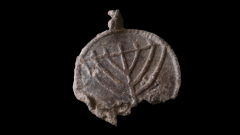
Dec 18th, 2025 - It's quick and easy to access Live Science Plus, simply enter your email below. We'll send you a confirmation and sign you up for our daily newsletter, keeping you up to date with the latest science news. Facebook X Whatsapp Reddit Flipboard Join the conversation Add us as a preferred source on Google Newsletter Subscribe to our newsletter Archaeologists in Jerusalem have unearthed a rare 1,300-year-old lead medallion decorated on both sides with the image of a seven-branched menorah — ... [Read More]
Source: livescience.com
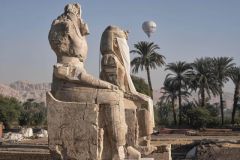
Dec 18th, 2025 - Getting your Trinity Audio player ready... BY SAMY MAGDY AND AHMED HATEM LUXOR, Egypt (AP) — Egypt on Sunday revealed the revamp of two colossal statues of a prominent pharaoh in the southern city of Luxor, the latest in the government's archaeological events that aim at drawing more tourists to the country. The giant alabaster statues, known as the Colossi of Memnon, were reassembled in a renovation project that lasted about two decades. They represent Amenhotep III , who ruled ancient ... [Read More]
Source: orlandosentinel.com
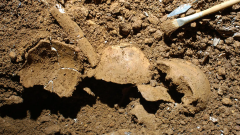
Dec 18th, 2025 - It's quick and easy to access Live Science Plus, simply enter your email below. We'll send you a confirmation and sign you up for our daily newsletter, keeping you up to date with the latest science news. Facebook X Whatsapp Reddit Flipboard Join the conversation Add us as a preferred source on Google Newsletter Subscribe to our newsletter An excavation in Italy has unearthed the oldest and first known evidence of father-daughter incest in the archaeological record, a new genetic study reveals. ... [Read More]
Source: livescience.com
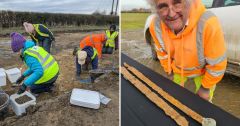
Dec 18th, 2025 - For fifteen days straight, amid pouring January rains, archaeologists from Historic England and Cotswolds Archaeology worked laboriously to unearth some historic secrets from the ancient Roman period. Squatting in the trenches of a dusty field in Gloucestershire, these treasure diggers were intending to close the chapter that was accidentally unlocked by a metal detectorist in March 2023. Deep in the northern heart of the Cotswolds, near the village of Willersey, two ... [Read More]
Source: greenmatters.com
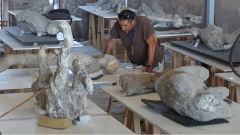
Dec 17th, 2025 - It's quick and easy to access Live Science Plus, simply enter your email below. We'll send you a confirmation and sign you up for our daily newsletter, keeping you up to date with the latest science news. Facebook X Whatsapp Reddit Flipboard Join the conversation Add us as a preferred source on Google Newsletter Subscribe to our newsletter Pompeii may have been unseasonably cold when the eruption of Mount Vesuvius destroyed the Roman city in A.D. 79, new research proposes. A new analysis of 14 ... [Read More]
Source: livescience.com
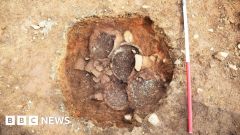
Dec 17th, 2025 - Newly published research has revealed a "mysterious mass burial event" in the south of Scotland about 3,300 years ago. Excavations were undertaken in 2020 and 2021 by Guard Archaeology during the construction of the access route to the Twentyshilling Wind Farm near Sanquhar in Dumfries and Galloway. It revealed a Bronze Age barrow - an ancient burial mound - with the cremated bones of several people contained inside five closely-packed urns. Archaeologist Thomas Muir, who led the excavation, ... [Read More]
Source: bbc.com

Dec 16th, 2025 - It's quick and easy to access Live Science Plus, simply enter your email below. We'll send you a confirmation and sign you up for our daily newsletter, keeping you up to date with the latest science news. Facebook X Whatsapp Reddit Flipboard Join the conversation Add us as a preferred source on Google Newsletter Subscribe to our newsletter Archaeologists in Egypt have uncovered the remains of a 4,500-year-old valley temple. The structure is part of a sun temple that ancient Egyptians built in ... [Read More]
Source: livescience.com
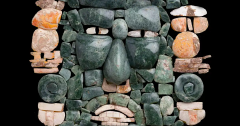
Dec 16th, 2025 - History from countries and communities across the globe, including the world's major wars. The stories behind the faiths, food, entertainment and holidays that shape our world. Tom Metcalfe A smoked mummy, a Pompeiian banquet room and a Neanderthal fingerprint are among the year's most intriguing discoveries. From ancient Maya kings to Vietnamese mummies to Egyptian pleasure barges, 2025 brought significant archaeological discoveries from all corners of the world. Some were stunning one-offs, ... [Read More]
Source: history.com

Dec 16th, 2025 - Follow Earth on Google A tiny 8,000-year-old stone figurine from Damjili Cave in western Azerbaijan is pushing archaeologists to rethink how farming-era culture reached the South Caucasus. The object looks human but has no clear male or female traits, which makes it what researchers call an asexual figurine. Carved just before permanent farming villages appeared in the region, the figurine sits at the tipping point between mobile hunting life and settled agriculture. Its unusual body ... [Read More]
Source: earth.com
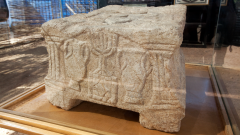
Dec 15th, 2025 - It's quick and easy to access Live Science Plus, simply enter your email below. We'll send you a confirmation and sign you up for our daily newsletter, keeping you up to date with the latest science news. QUICK FACTS Name: Magdala stone What it is: Carved stone block Where it is from: Magdala Synagogue, Israel When it was made: Before A.D. 70 In 2009, Israeli archaeologists uncovered a massive stone in an ancient synagogue near the Sea of Galilee — and it had an ancient menorah carved ... [Read More]
Source: livescience.com
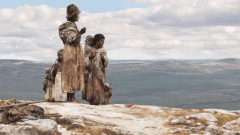
Dec 15th, 2025 - An ancient human lineage roamed Europe's frozen tundra for nearly 80 generations. Then they died out. Some 45,000 years ago, in the frigid reaches of Ice Age Europe, a small band of humans trudged across the tundra, their dark skin warmed by fur-lined cloaks. They hunted woolly rhinos, fashioned distinctive stone tools, and perhaps exchanged stories around fires in caves. A new discovery of ancient genomes brings these forgotten ancestors — and their fleeting presence — into clearer ... [Read More]
Source: zmescience.com

Dec 13th, 2025 - It's quick and easy to access Live Science Plus, simply enter your email below. We'll send you a confirmation and sign you up for our daily newsletter, keeping you up to date with the latest science news. While diving off the coast of Egypt, underwater archaeologists found the 2,000-year-old remains of a boat that may have been a luxurious "pleasure barge" for the ancient elite. The team discovered the barge in the ancient harbor of Alexandria, the capital of Egypt during the Ptolemaic period ... [Read More]
Source: livescience.com
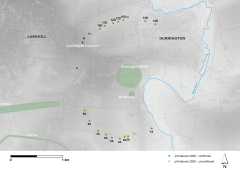
Dec 12th, 2025 - Some massive prehistoric pits were built by human hands. You think you know Stonehenge. The iconic rock towers standing against a green field and a gray English sky are one of the most impressive sights in human history. But that's just the tip of the iceberg. Stonehenge, the monument, was merely the centerpiece of a sprawling, bustling industrial complex of the Neolithic world. Archaeologists exploring the region have uncovered a landscape teeming with life, death, and engineering feats that ... [Read More]
Source: zmescience.com
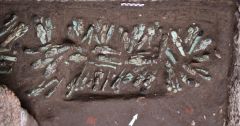
Dec 5th, 2025 - A treasure trove of 225 funerary figurines has been discovered inside a tomb in the ancient Egyptian capital of Tanis in the Nile Delta, a rare find that experts say has also solved a "long-standing archaeological mystery." "Finding figurines in place inside a royal tomb has not happened in the Tanis necropolis since 1946," French archaeologist Frederic Payraudeau told reporters in Paris on Friday. Such a find has also never happened before further south in Egypt's Valley of the Kings near ... [Read More]
Source: cbsnews.com

Nov 4th, 2025 - After two decades and an estimated cost of $1bn, the Grand Egyptian Museum (GEM) opened its doors to the public on Tuesday, just a few days after the official opening ceremony on Saturday. Regarded as the world's largest archaeological facility for a single civilisation, the museum is located 2km (1.2 miles) from the pyramids of Giza and 8km (5 miles) from the capital, Cairo. The complex spans nearly 500,000sq metres (5,381,900sq ft) and will house more than 100,000 ancient artefacts from the ... [Read More]
Source: aljazeera.com
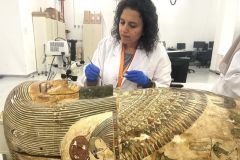
Oct 30th, 2025 - For the first time since the boy king's tomb was discovered in 1922, all the items will stored in one place, a museum director told NBC News. GIZA, Egypt — They're the crown jewels of the Grand Egyptian Museum — two galleries devoted to the ancient pharaoh Tutankhamun . Showcasing more than 5,300 objects from the young king's tomb, including his iconic death mask and glittering royal regalia, the new section of the vast museum here on the outskirts of Cairo is expected to draw ... [Read More]
Source: nbcnews.com